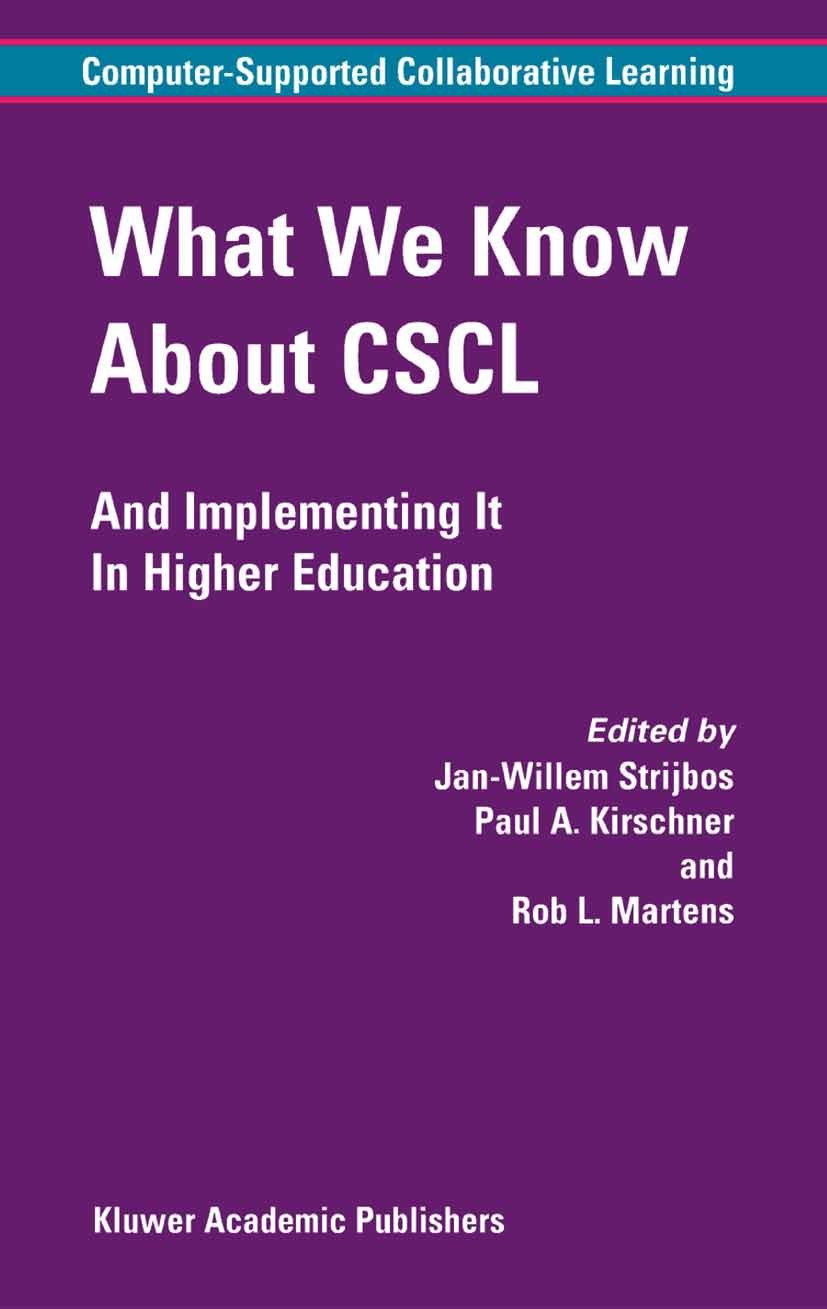| 書目名稱 | What We Know About CSCL | | 副標(biāo)題 | And Implementing It | | 編輯 | Jan-Willem Strijbos,Paul A. Kirschner,Rob L. Marte | | 視頻video | http://file.papertrans.cn/1028/1027788/1027788.mp4 | | 叢書名稱 | Computer-Supported Collaborative Learning Series | | 圖書封面 |  | | 描述 | A Dutch policy scientist once said the information and knowledge in the twenty-first century has the shelf life of fresh fish, and learning in this age often means learning where and how to find something and how to relate it to a specific situation instead of knowing everything one needs to know. On top of this, the world has become so highly interconnected that we have come to realise that every decision that we make can have repercussions somewhere else. To touch as many bases as possible, we need to work with knowledgeable others from different fields (multiple agents) and take heed of their points of view (multiple representations). To do this, we make increasing use of computers and computer-mediated communication. If computer-supported collaborative learning (CSCL) is not simply a newly discovered hype in education, what is it and why are we writing a book about it? Dissecting the phrase into its constituent parts, we see that first of all CSCL is about learning, and in the twenty-first century this usually means constructivist learning. | | 出版日期 | Book 2004 | | 關(guān)鍵詞 | Instructional Design; cluster; collaboration; collaborative learning; computer-supported collaborative l | | 版次 | 1 | | doi | https://doi.org/10.1007/1-4020-7921-4 | | isbn_softcover | 978-94-017-4201-6 | | isbn_ebook | 978-1-4020-7921-4Series ISSN 1573-4552 Series E-ISSN 2543-0157 | | issn_series | 1573-4552 | | copyright | Springer Science+Business Media New York 2004 |
The information of publication is updating

|
|
 |Archiver|手機(jī)版|小黑屋|
派博傳思國際
( 京公網(wǎng)安備110108008328)
GMT+8, 2025-10-12 17:46
|Archiver|手機(jī)版|小黑屋|
派博傳思國際
( 京公網(wǎng)安備110108008328)
GMT+8, 2025-10-12 17:46


